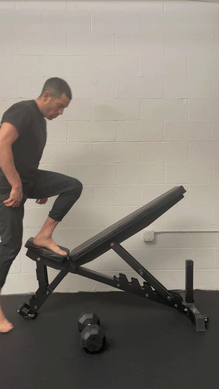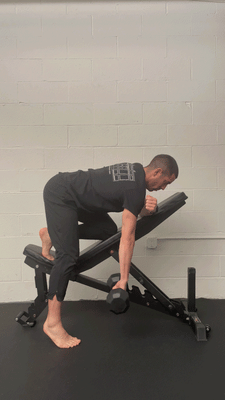Coach's Corner: How to Do Proper Bent Over Rows with Dumbbells
JP
Back to Blog
April 27, 2023
Bent over row is a beloved accessory movement due to its efficacy in improving pull-up and barbell techniques to develop overall back strength. This coaching tip is designed to help set up your bent-over row to help you focus on the scapular rhythm needed to execute any rowing variation.
1. Grab an adjustable bench and place it at an incline.
2. To your best knowledge, pick a weight with an intensity that renders 10-12 reps with only 2 more left in the tank.
3. Use the incline of the bench to support your base knee.

The knee at a higher angle helps you stabilize the lumbar spine while the forearm at an incline helps you maintain a straight/level spine. A common pitfall associated with any bent-over row variation is starting with a rounded spine.

By stabilizing the lower spine, you can focus on a better scapular rhythm while training more thoracic spine extension. This as a single-arm exercise can help you iron out asymmetries that are hard to address when working with a barbell or calisthenics bar.
Note: There are plenty of rowing variations that tell you to flex the spine to increase the lengthening phase of the row. Rounding forward before a pull is a valid and legitimate choice depending on the context.
This accessory movement is designed to refine your barbell technique or any movement that requires an upright spine/thoracic extension under load.



